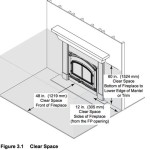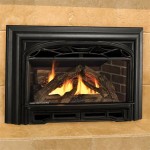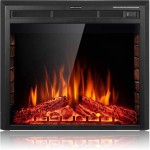How to Install a Vented Gas Log Fireplace
Installing a vented gas log fireplace can significantly enhance the ambiance and comfort of a living space. This installation, however, necessitates meticulous planning, adherence to safety regulations, and a thorough understanding of both gas and fireplace systems. This article provides a detailed guide to the process, outlining the essential requirements and steps involved in successfully installing a vented gas log fireplace.
Prior to commencing any installation work, confirm local building codes and regulations. These codes dictate specific requirements for gas appliance installations, including venting, clearances, and gas line specifications. Failure to comply with these regulations can result in fines, mandatory rework, and potential safety hazards. A permit might be required from the local authorities before starting the installation.
Gather all necessary tools and materials. This includes, but is not limited to, a pipe wrench, adjustable wrench, Teflon tape, pipe sealant approved for gas lines, level, screwdriver set, drill, masonry drill bits (if working with a masonry fireplace), safety glasses, work gloves, and a gas leak detector. Precision in having the right tools will expedite the process and minimize errors.
The installation process is multifaceted and involves these key considerations:
Preparing the Existing Fireplace
The first step involves preparing the existing fireplace. This includes thoroughly cleaning the firebox to remove any ash, soot, or debris. A clean firebox ensures proper airflow and efficient operation of the gas logs.
Inspect the chimney flue for obstructions or damage. A clear flue is critical for safely venting exhaust gases. If obstructions are present, they should be removed by a professional chimney sweep. Damage to the flue liner, such as cracks or breaches, should be repaired or relined before proceeding with the installation. A damaged flue can lead to carbon monoxide leaks and poses a significant safety risk.
Measure the firebox dimensions, including the width, depth, and height. These measurements are crucial for selecting a gas log set that fits properly within the firebox. A properly sized log set ensures optimal heat distribution and aesthetic appeal.
Seal any unnecessary openings in the fireplace. This includes sealing around the damper if it is not being used or replacing it with a purpose-built plate. Sealing these openings minimizes drafts and prevents heat loss. This is not always necessary as some venting systems are designed to operate with a partially open damper.
Ensure that the fireplace has a functional damper. The damper needs to be able to lock into a fully open position as vented gas logs are designed to be operated with the damper open. This ensures proper ventilation and prevents the buildup of harmful gases. If the existing damper is damaged or non-functional, it should be repaired or replaced.
Running the Gas Line
The next step is to run a gas line to the fireplace. This task should ideally be performed by a qualified and licensed gas fitter. Working with gas lines can be dangerous, and any errors can lead to gas leaks and explosions.
Locate the nearest gas supply line. It is critical to tap into a gas line that is adequately sized to handle the additional load of the gas log fireplace. Consult with a gas fitter to determine the appropriate gas line size and pressure requirements. A small gas line might hinder the performance of the gas appliance.
Turn off the gas supply at the main shut-off valve before beginning any work on the gas line. This is a critical safety precaution to prevent gas leaks.
Install a new gas shut-off valve near the fireplace. This valve allows for easy shut-off of the gas supply for maintenance or emergencies. Ensure that the valve is easily accessible.
Use black iron pipe or approved flexible gas line to run the gas line from the supply to the fireplace. Ensure that all connections are properly tightened and sealed with Teflon tape or pipe sealant approved for gas lines. Follow the manufacturer's instructions for the specific type of pipe or flexible line being used.
Pressure test the gas line to check for leaks. Apply a soap and water solution to all connections and look for bubbles. If bubbles are present, tighten the connections or re-seal them and repeat the test. Never use a flame to check for gas leaks.
Installing the Gas Log Set and Connecting the Gas Line
After the gas line is installed and tested, the gas log set can be installed. The installation process typically involves placing the burner assembly in the firebox and arranging the ceramic logs according to the manufacturer's instructions.
Place the burner assembly in the firebox, ensuring that it is level and stable. The burner assembly should be positioned in accordance with the manufacturer's instructions to ensure proper flame distribution and heat output.
Arrange the ceramic logs on the burner assembly according to the manufacturer's instructions. The logs are often numbered or labeled to indicate their proper placement. Incorrect placement of the logs can affect the appearance and efficiency of the fireplace.
Connect the gas line to the burner assembly using the appropriate fittings. Ensure that all connections are properly tightened and sealed with Teflon tape or pipe sealant approved for gas lines. Consult the manufacturer’s manual for specific instructions related to the type of connection required for the specific model.
Test the gas log fireplace after installation. Turn on the gas supply and light the burner. Observe the flame pattern and ensure that the logs are burning evenly. If there are any issues with the flame, consult the manufacturer's troubleshooting guide.
Check for gas leaks again after the gas log fireplace is installed. Apply a soap and water solution to all connections and look for bubbles. If bubbles are present, tighten the connections or re-seal them and repeat the test. Address any leaks immediately.
Educate yourself on the safe operation of the gas log fireplace. Familiarize yourself with the controls and safety features. Understand the proper venting procedures and maintenance requirements.
Consider installing a carbon monoxide detector near the fireplace. Carbon monoxide is a colorless, odorless gas that can be deadly. A carbon monoxide detector provides an early warning of dangerous levels of carbon monoxide in the home.
Regularly inspect and maintain the gas log fireplace. Check the burner assembly for debris and clean it as needed. Inspect the chimney flue for obstructions and have it professionally cleaned periodically.
If any problems with the gas log fireplace are detected, such as a gas leak or unusual flame pattern, turn off the gas supply and contact a qualified gas fitter for assistance. Do not attempt to repair the fireplace yourself unless you are qualified to do so.
Properly disposing of the old fireplace components and packaging materials is environmentally responsible. Follow local regulations regarding the disposal of these materials.
Always refer to the manufacturer's instructions for specific details regarding the installation and operation of your particular gas log fireplace model. The manufacturer's instructions provide valuable information and guidance that is specific to your product.
In summary, installing a vented gas log fireplace requires careful planning, adherence to safety regulations, and a thorough understanding of both gas and fireplace systems. By following the steps outlined in this guide, one can safely and effectively install a gas log fireplace and enjoy its warmth and beauty for years to come.

How To Select And Install A Gas Fireplace Log Set Fireplaces Direct Learning Center

What Are The Best Ways To Vent A Gas Fireplace Zoroast
Gas Fireplace Venting Explained Heat Glo

How To Select And Install A Gas Fireplace Log Set Fireplaces Direct Learning Center
Gas Fireplace Venting Explained Heat Glo

Vented Gas Logs Heater Or Decorative Bart Fireside

How To Install A Match Lit Vented Gas Log Set With Ben

Vented Vs B Vent Direct Free Dixie S

How To Put In A Gas Log Set For Fireplace

If You Have A Gas Fireplace It May Or Not Chimney Flue
Related Posts








